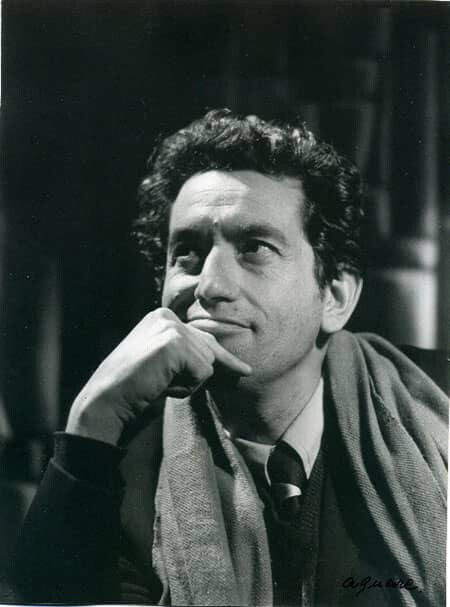
Today marks the centennial of the birth of Rafael Squirru (23/03/1925 – 05/03/2016), founder of the Museum of Modern Art in 1956 and its first director, when it was little more than an idea: it had neither a venue nor paintings. A critic for LA NACION, a multifaceted, Renaissance intellectual, writer and poet, public official, journalist, talent scout, cultural promoter, lover of Martín Fierro, translator of Shakespeare, teacher, orator, and cultivator of friendship, his figure is well worth remembering.
MARTHA PELUFFO'S EXORCISM, THE SORCERESS WHO BEWITCHED BUENOS AIRES ARTISTS "To say that Rafael was a brilliant art critic is undoubtedly true but reductive," recalls his daughter María Eloisa, author of his biography ¡Tan Rafael Squirru! "He was a multifaceted intellectual, a champion of culture in all its manifestations. Firmly rooted in the Hispanic-American and Anglo-Saxon tradition (his bilingualism allowed him to translate Hamlet and The Tempest into Spanish), he had also assimilated the Bible (read from cover to cover several times in several versions), the Baghavad Gita, and the I Ching. He knew Martín Fierro by heart and quoted it in his daily life and in his writings. His extensive library came to contain several thousand volumes in various languages. A lover of music and tango, he maintained with his characteristic irreverent tone that Cambalache should be our national anthem," she continues.
His public performance marked the history of Argentine art. In 1960, during the government of Arturo Frondizi, he was appointed director of Cultural Relations of the Foreign Ministry and sent Alicia Penalba's sculptures to the São Paulo Biennial and Antonio Berni's engravings to the Venice Biennial. Both artists received first prize. "Fashions may come and go, both in Europe and America, but the greatness of the soul, which is beyond any fashion, is what endures and makes the work of genius enduring," Squirru said in one of the fifty books he wrote, including essays, poetry, criticism, and theater.
When they told him he was the director of a phantom museum, he replied, "Le musée c'est moi [The museum is me]." His pen was read in these pages for more than twenty years. He left a definition for the art of criticism, which is collected in his biography: "For me, criticism, more than interpretation, is about creation. A very particular creation that is produced from the work of another. It is being a poet that allows me to be a critic. The art critics I admire most are also great artists, sometimes in other genres. There we have Baudelaire, a phenomenal critic who was also a great poet [...] Of course, a critic also has to have an eye."
TRUE OR FALSE? DISPUTE BETWEEN THE VAN GOGH MUSEUM AND A COLLECTOR OVER A WORK SIGNED BY A CERTAIN "VINCENT" Between 1963 and 1970 he was director of Culture of the Organization of American States (OAS) based in Washington, from where he continued to promote Latin American culture. His daughter encourages taking him as a beacon: "Immersed as we are in the new culture of non-culture, remembering this Argentine colossus who dedicated his life to trying to clarify the difference between what is valuable and what is not, is a duty, a wake-up call and an invitation to hope. Let us not give up, as Rafael himself said quoting Almafuerte, not even defeated. Especially for those of us who are in the battered world of teaching and education, the figure of Rafael Squirru gives us the necessary encouragement to continue. The watchword, he always repeated, is not to give up."
[Copyright (c) Global Economic Times. All Rights Reserved.]






























